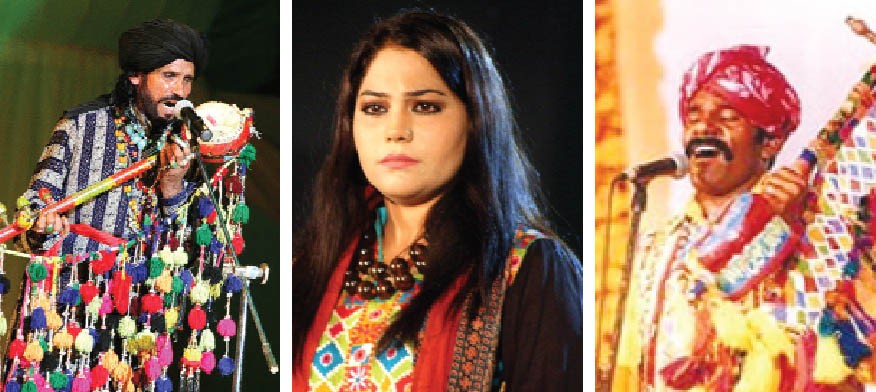
A sufi music night in Alhmara last week drew attention to how the genre fits in today’s music scene

The term Sufi Music is now used extensively. As is the practice with languages, the expression or phrase that is used very widely becomes a formal expression of the language with the passage of time. Its frequent usage becomes the guarantor of its authenticity. Under a similar banner, Sanam Marvi, Sain Zahoor and Krishan Lal Bheel performed at the Alhamra last week.
The term is used so widely that it is supposed to be the distinct form or a genre that is the expression of the land now called Pakistan. It is also convenient because it is a mixture of sorts -- of folk and classical music and also of religious and secular expression. It sits well with a society that is often too afraid of straying off the course of religion in its quest for a genuinely human expression of the here and now. It also assuages the guilt of those who in their heart of hearts have reservations about the religious legitimacy of music as read in purely religious sense.
During the seven/eight thousand years of Muslim rule in the subcontinent, there were four distinct platforms or centres of music. One was the court with its lavish patronage, the other the temple, the third the shrine and the fourth, the more localised one, was of folk expression with no overarching institutional presence. All these platforms or forums were interchangeable in the sense that they did not perform their music in a mutually exclusive manner but borrowed heavily from each other in terms of artistic experimentations and also in terms of artistes. But it is difficult to trace down the separation of forms in very distinct cut and dried manner in that period as it is done these days. If someone said four hundred years ago that there was a distinct genre called ‘Sufi Music’, the sufis would have looked at you with great deal of skepticism. Music, if anything, was the expression of their sensibility and it was practiced in and around the shrine either every day, every Thursday or on the occasion of the urs. It was not supposed to be a concert performance.
Sain Zahoor’s repertoire is rather limited and much as he has tried to move away from the one number "Allah hoo", that he made famous or that made him famous, it appears that he is either recreating the same melody with a variation or is driven by popular taste. He belongs to the tradition of the roving minstrels who were traveling musicians, aiktara in hand, not limiting themselves to one shrine or one locality but moving mostly on foot singing away. Their singing has been simple and with the accompaniment of the strumming of the taars of the aiktara which provides the drone and the basis of the melody they sing and the more popular kalams of the sufis. Sain Zahoor’s forte also lies in that -- the simplicity of the composition, the full-throated ease and easily recallable kalam.
Sanam Marvi has got oodles of talent and she has practiced (or riyazed) herself to the point where she is a significant presence on the music scene among the younger vocalists -- if Abida Parveen is considered to be senior guru. Sanam Marvi’s shortcoming has been that she winds up her numbers too soon and insists on singing in faster tempo.
If she just had more confidence in her that she can take the audience with her, she would sing in the slower tempo and not in an overly-hurried way. She should dwell on the note and take pleasure from the immense embedded layers in that, rather than hastening to render the composed parts of the renditions and then winding it up with a flourish in the upper tetrachord. There should be no concern for her as she has a very strong unfaltering application of the sur and her voice does not waver or is tentative like so many of the vocalists these days.
She should bring out the merit of a vocalist which is to dwell on the note, and play around with the notes of the scale with various combinations and permutations. The composed part should be properly tackled or merged with her "khula gana". Improvisation and predetermined sets of notes should coexist without being noticed.
Krishan Lal Bheel too belongs to the tradition of the roving minstrels but they have mostly been located in Sindh and areas adjoining Rajasthan. They used to roam freely in the deserts but with the demarcation of Indian and Pakistani territories now usually confine themselves to Sindh. Belonging to the traditions of the bhagats they sing the kalam of the Sufi poets mostly in Sindhi, Marwari and Rajasthani and have been a permanent feature of the cultural life of that area for centuries. Attired in their saffron clothes with aiktara in hand they sing and dance mostly on the melas and urs of the Sufis in Sindh.